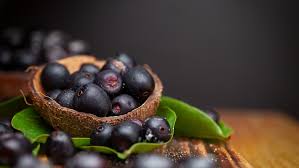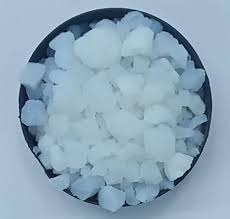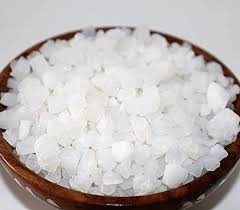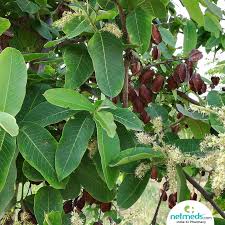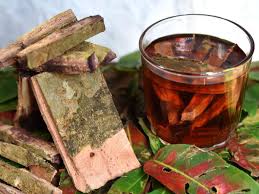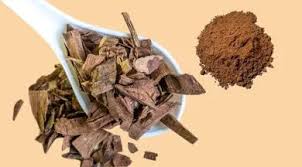
Amla for Skin Whitening: Natural Remedies That Work
In today’s world of skincare, where countless chemical-based products promise glowing and fair skin, many individuals are now seeking safe, effective, and natural remedies. One such time-tested Ayurvedic solution is amla, also known as Indian gooseberry. Rich in antioxidants and vitamin C, amla offers powerful skin-brightening and rejuvenating properties without the harmful effects of harsh chemicals.
Whether you suffer from dullness, pigmentation, or uneven skin tone, amla can help naturally lighten and brighten your skin. In this detailed article, we’ll explore the benefits of amla for skin whitening, how to use it both internally and externally, and why it remains one of the most trusted natural ingredients in Ayurvedic skincare.
Long Description
- Why Amla Works for Skin Whitening
Amla’s effectiveness in brightening skin comes from its rich nutritional content and natural compounds:
Vitamin C: A powerful antioxidant that inhibits melanin production, reduces pigmentation, and improves skin clarity.
Antioxidants: Neutralize free radicals that cause skin aging, dark spots, and dullness.
Anti-inflammatory properties: Help reduce acne, blemishes, and redness that contribute to uneven tone.
Astringent effect: Tightens skin pores and smoothens texture.
Natural exfoliant: Promotes removal of dead skin cells and encourages fresh skin regeneration.
These combined effects help reveal brighter, more radiant, and even-toned skin with consistent use.
- Internal Use of Amla for Brighter Skin
Healthy skin starts from within. Amla supports liver detox, blood purification, and overall digestion—all of which reflect directly on your skin’s appearance.
A. Amla Juice in the Morning
Drinking 15–20 ml of fresh amla juice on an empty stomach helps detoxify the system and improves skin clarity over time. It purifies the blood and promotes a natural glow.
B. Amla Powder with Honey
Mix 1 teaspoon of amla powder with 1 teaspoon of honey. Consume it once daily to boost collagen, improve digestion, and enhance nutrient absorption.
C. Amla in Smoothies
Add amla powder or juice to your daily smoothies for a rich dose of antioxidants and vitamin C. This internal nourishment reflects on the skin over weeks of consistent use.
D. Amla Capsules
If you prefer supplements, take amla capsules from a reputable, organic brand. Follow the recommended dosage for best results.
- External Use of Amla for Skin Whitening
Topical use of amla is key for targeting pigmentation, uneven tone, and dullness directly.
A. Amla Face Pack for Skin Brightening
Ingredients:
1 teaspoon amla powder
1 teaspoon besan (gram flour)
Rose water to form a paste
Method:
Apply the paste on clean skin and leave it for 15–20 minutes. Rinse with lukewarm water. Use twice a week to lighten pigmentation and refresh dull skin.
B. Amla and Yogurt Face Mask
Ingredients:
1 teaspoon amla powder
2 teaspoons plain yogurt
Method:
Mix and apply evenly over the face. Leave for 15 minutes and rinse off. Yogurt moisturizes while amla brightens skin tone.
C. Amla and Lemon Spot Treatment
Ingredients:
1 teaspoon amla juice
A few drops of fresh lemon juice
Method:
Apply directly on dark spots or pigmented areas. Leave for 10 minutes and rinse. Use only at night and apply sunscreen during the day.
D. Amla Infused Water as Toner
Boil a few slices of amla in water, cool it, and use the infusion as a natural facial toner. It tightens pores and helps balance skin tone.
- Amla for Treating Common Skin Issues Related to Uneven Tone
Amla doesn’t just whiten skin—it also addresses many root causes of pigmentation and dullness.
A. Reduces Hyperpigmentation
Regular application of amla helps fade dark patches caused by sun damage, acne scars, or hormonal changes.
B. Treats Blemishes and Acne Marks
Thanks to its antibacterial and astringent nature, amla cleans pores, fights acne-causing bacteria, and accelerates healing of old scars.
C. Prevents Melanin Overproduction
Vitamin C inhibits tyrosinase enzyme activity, which plays a key role in melanin synthesis. Less melanin = lighter and more even-toned skin.
D. Boosts Collagen Production
Collagen helps maintain skin elasticity and firmness. Amla boosts collagen naturally, leading to a healthier, plumper appearance.
- Amla’s Role in Ayurvedic Skincare
In Ayurveda, amla is a Rasayana—a rejuvenator used for enhancing skin glow, vitality, and youthfulness. It balances all three doshas, especially Pitta, which is linked to skin inflammation and pigmentation.
Traditionally, amla is used in formulations like Triphala, Chyawanprash, and herbal face packs for enhancing beauty from within. Its cooling and detoxifying nature makes it ideal for maintaining skin health in both dry and oily skin types.
- Scientific Backing for Amla’s Skin Benefits
Modern research supports the Ayurvedic claims about amla’s role in skincare:
A study in Phytotherapy Research highlights amla’s high antioxidant content, confirming its ability to reduce oxidative damage in skin.
Another report in the Journal of Ethnopharmacology describes amla’s anti-inflammatory and skin regenerative effects.
Dermatological studies support vitamin C’s ability to lighten pigmentation and improve overall complexion when used topically and internally.
These findings reinforce the relevance of using amla as a scientifically-backed, safe skin-whitening remedy.
- Best Practices for Using Amla for Skin Whitening
To achieve visible results safely and naturally, follow these tips:
Use both internal and external methods for holistic skin transformation.
Be consistent—natural remedies require time and dedication.
Always use organic or pure amla products free from preservatives or synthetic additives.
Perform a patch test before applying any new face pack or DIY treatment.
Apply sunscreen daily—skin becomes more photosensitive when using vitamin C-rich remedies like amla.
Eat a balanced diet and drink enough water to enhance skin results.
- Potential Side Effects and Precautions
Although amla is generally safe, here are some points to consider:
Excessive internal consumption may cause acidity or loose stools in some people.
When used topically, avoid contact with eyes and open wounds.
Do not mix amla with other strong acids or harsh exfoliants.
Those with citrus allergies should consult a practitioner before internal use.
If you’re pregnant, nursing, or undergoing treatment for skin conditions, consult a healthcare provider before making amla a regular part of your skincare routine.
- Ideal Audience for Amla-Based Skin Whitening
Amla is best suited for individuals who:
Want a natural alternative to chemical skin brightening products
Struggle with dull skin, uneven tone, or pigmentation
Prefer Ayurvedic skincare backed by science
Have sensitive skin and wish to avoid harsh bleaching agents
Are looking for a budget-friendly and long-term solution
Whether you’re in your early 20s or late 40s, amla can be a key ingredient in your journey to radiant skin.
Conclusion
Amla is a natural powerhouse that offers safe, effective, and sustainable skin-whitening benefits. Unlike chemical treatments that often have side effects, amla works gently by nourishing the skin from within and clearing it from the outside. Its richness in vitamin C, antioxidants, and anti-inflammatory agents makes it a holistic solution for a glowing, even-toned complexion.
When used regularly—through juice, powder, capsules, or masks—amla can transform your skin over time. Rooted in Ayurveda and supported by science, amla continues to be one of the most trusted natural ingredients for skin care and whitening. Include it in your daily routine, and let your skin shine with health and natural beauty.



